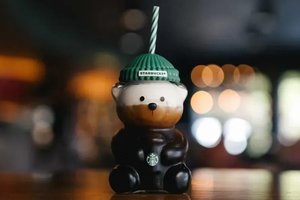Sign up for the Slatest to get the most insightful analysis, criticism, and advice out there, delivered to your inbox daily.
The gales of November came early—and in every way possible. Icy snow battered Chicago on Sunday night, swirling so hard it felt like the wind had teeth. Inside of the Skylark, one of the city’s venerable dive bars, a crowd of dozens looked grateful to have escaped it. But early snowfall wasn’t what brought us together. We weren’t there for the Bears game. It wasn’t a trivia night. We were there for something weirder—and maybe bigger.
“Good evening, everyone,” a voice called out over the PA. Heads turned to a makeshift stage in the back, where a woman stood before a microphone in front of a projection screen showing an old photo of a ship, one that anyone in the room would have recognized at a glance. “Who’s ready to talk about the Edmund Fitzgerald?”
Monday marked the 50th anniversary of the sinking of the SS Edmund Fitzgerald, which went down during a ferocious storm in Lake Superior on Nov. 10, 1975. The disaster took the lives of the ship’s entire crew, 29 men who were never found, and it remains the largest ship to have ever sunk in the Great Lakes.
Ships sink all the time, especially in busy waterways like Lake Superior. An estimated 6,000 to 10,000 ships have sunk in the Great Lakes alone, with some dating as far back as the 17th century. The Edmund Fitzgerald, also known as “the Fitz,” might have disappeared into obscurity—just another tragedy in the murky waters of maritime history—if not for Canadian singer-songwriter Gordon Lightfoot and his song “The Wreck of the Edmund Fitzgerald.” Released in 1976, less than a year after the ship’s sinking, his folk ballad became an instant hit, turning a regional disaster into an international elegy.
The song, like the shipwreck itself, is now old. So it was a wonder why a place like Skylark was packed with people of all ages—groups of twentysomething transplants with mullets standing shoulder-to-shoulder with white-haired locals adjusting their hearing aids—to listen to speakers from the Chicago Maritime Museum give a talk about the Edmund Fitzgerald and other Great Lake shipwrecks. Scrawled in chalk in the list of draft beers was the Edmund Fitzgerald porter, a longtime brew from the Great Lakes Brewing Co.
But if you shared anything close to my social media algorithm, the scene wouldn’t be a total surprise. For weeks leading up to the wreck’s anniversary, Lightfoot’s song seemed everywhere—looping on TikTok and Reels, playing over clips of storms and churning waves of the Great Lakes—and ironic captions memorializing the ship: “Drink 30 beers on Monday,” one caption said. “29 for each man lost, and 1 for the ship herself.”
“Nobody knows I’m working out to The Wreck of the Edmund Fitzgerald,” read another on a video with a person on a treadmill.
There are T-shirts and bumper stickers. Documentaries and song covers. One impressive Halloween costume of the ship went viral on TikTok. At the Skylark, I even saw one young woman who had an Edmund Fitzgerald baseball cap. She told me she bought it weeks before at the Great Lakes Shipwreck Museum. “When else am I going to be able to wear this?” she said with an embarrassed smile. Nearly 50 years after the ship’s sinking, a new generation discovered it like a wreck in dark waters. The Edmund Fitzgerald had become one of the most lasting cultural touchstones of the digital age: a meme—albeit a strangely reverent one.
The sinking of the Fitz, like any good shipwreck story, is still something of a mystery. When it sank, the freighter was on a routine shipping voyage through Lake Superior, transporting iron ore from a town near Duluth to a steel mill outside of Detroit, a voyage that the ship and her crew had done for 17 years. When the Fitz launched in 1958, it was the largest ship on the Great Lakes, which only added to the intrigue of how it could have gone down.
A few days after it sank, a U.S. Navy aircraft used magnetic detection and found the wreck roughly 17 miles from Whitefish Bay. Later surveys and dives confirmed that the ship’s hull had broken into two.
Theories have multiplied in the decades since—many credible, some veering into conspiracy and folklore. Experts largely agree that the ship was largely undone by the biblical storm, a once-in-a-century squall that hammered Lake Superior with sustained winds of more than 50 mph. Torrential sleet and snow blinded the crew in a white wall. Modern simulations suggest that waves might have grown to more than 30 feet—more than enough to swamp and roll even a titanic like the Fitz.
Later findings by the United States Coast Guard and the National Transportation Safety Board suggested that it was due to faulty hatches that caused the ship to take water and eventually drown. This theory was disputed by experts years later. It was nonetheless immortalized in Lightfoot’s lyrics: “At 7 p.m., a main hatchway caved in, he said, ‘Fellas, it’s been good to know ya.’ ” (The Canadian songwriter later changed the lyrics for live performances after learning of the new findings to “At 7 p.m., it grew dark, it was then he said, ‘Fellas it’s been good t’know ya.’ ”)
Despite all this, one truth remains: Nobody knows, to this day, what sank the Edmund Fitzgerald. The mystery, along with Lightfoot’s mournful and eminently meme-able dirge, created fertile soil for a cultural resurgence today—one driven largely by Gen Z and millennials who love mythologizing working-class tragedies and Midwestern nostalgia. It is, in part, a continuation of a throughline for these generations of young people, who are frustrated by the world they inherited and a system they believe has failed them.
The caption of one TikTok video summed it up best: “After decades of corporations trying to push Christmas earlier each year Gen Z stopped them with a collective obsession with this 1975 shipwreck.”
After the speakers finished, a guitarist took the stage. The crowd grew silent. Everyone waited for a performance of the song we all knew was coming, like bracing for a wave about to crash. Then, the musician took his seat and plucked a guitar string. Once. Twice. Three times. Over and over until he plucked it 30 times—29 for the men of the Fitz, and once for Gordon Lightfoot who died in 2023. After the final note rang out, he began playing the beginning strains of Lightfoot’s song. The room exploded in cheers:
The legend lives on from Chippewa on down
Of the big lake, they called Gitche Gumee.
Voices rose and echoed off the wood-paneled walls of the bar. For a moment, I felt myself transported, like a gale off Lake Michigan had carried us all back through time. It felt old, what we were doing, almost timeless. We could have been in a sailor’s tavern in Whitefish Bay in 1975.
As the verses dwindled, the crowd’s voices softened, almost reverent. I grew silent. Instead of singing, I thought about the Fitz and how it pulled this roomful of strangers together into the same story. When the song finished, and everyone cheered and started to pull on their coats to brave the gales of November, my mind turned over the last words the ship’s captain, Ernest McSorley, ever sent—a message that felt true for myself, and everyone in that room: “We are holding our own.”


